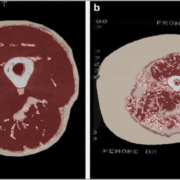The Data Must Make Sense
The data has to make sense before you do any type of statistical analysis; that’s why I always look at the mean and standard deviations. Let me explain what I found that seemed a little off in the Fried Potato Study.
The authors divided the data into quintiles based on potato consumption from less then once per month to greater than three days per week. The researchers reported 19 variables from age to calorie intake to the percentages of various diagnosed diseases in each quintile of potato intake.
I focused on the caloric intake and the Body Mass Index in each category of potato intake. As potato intake increased, the caloric intake increased 600 calories per day—from 1,150 calories per day to 1,750 calories per day. Keep in mind there are 3,600 calories in a pound, so that’s over a pound a week. In every quintile, as the potato intake increased, so did the caloric intake. That could make sense although we don’t know if the additional calories all came from potatoes.
What didn’t make sense was that the BMI for each quintile was about the same: 28.5. That makes no sense at all. If the calories increased, the BMI had to increase for each quintile. It did not. Physical activity could not explain it because those in the highest caloric intake were less active than those with the lowest potato intake. It would be wonderful if calories didn’t add up and we could eat all we want without gaining a pound. I’m sad to say it doesn’t work that way.
While the study leaves that question unanswered and many more, it still isn’t the single biggest question of all. Can you guess what it is—even without reading the study?
What are you prepared to do today?
Dr. Chet
Reference: Am J Clin Nutr doi: 10.3945/ajcn.117.154872









